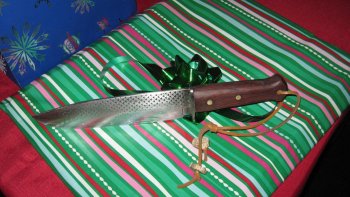Mark Behnke
Well-Known Member
Here's a cool little authentic neo-tribal piece my dad picked up in Mexico back in the 70s. It's by an anonymous unsung unknown true N-T Bladesmith. The blade is from a file and the handle is little stacked pieces of plastic with aluminum. The guard is from some type of steel.
... just for inspiration.

This is what I'm taliking about when I say "neo-tribal" has been around a long time, and has a will and "life" of it's own. It is not of our making, only of our recognition.
Not being a smart ass just not sure how this differs from a Scagel ?

